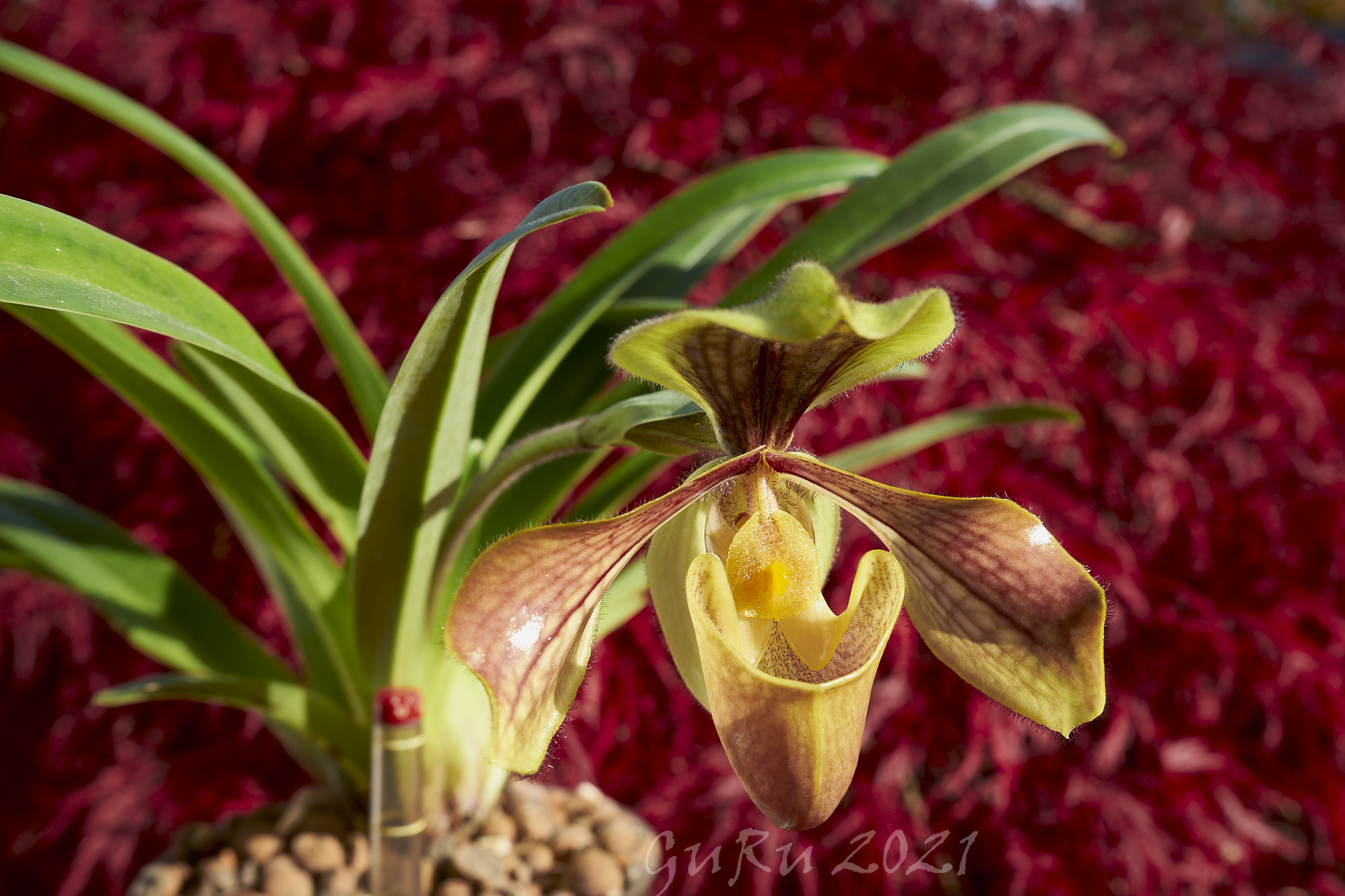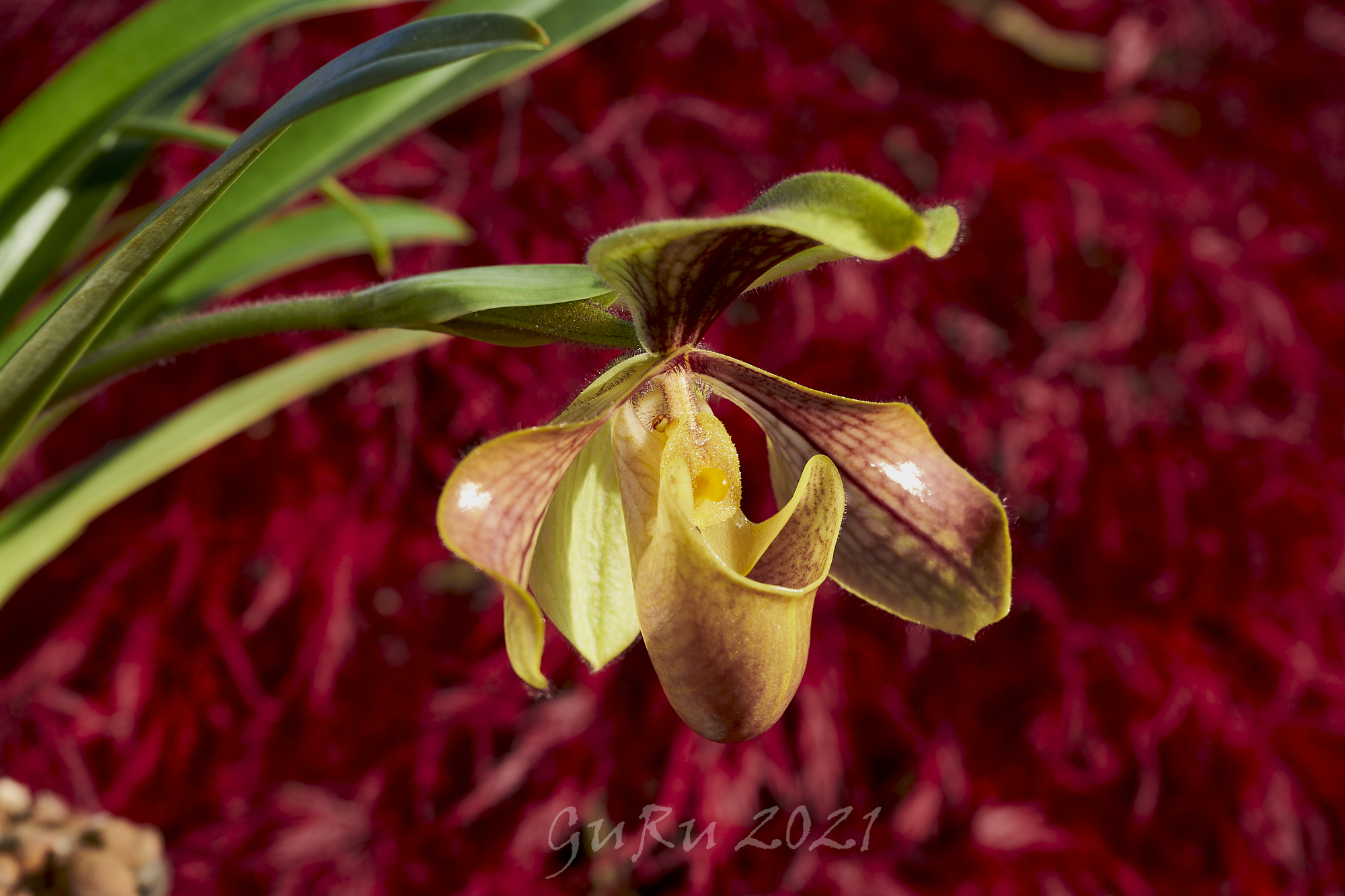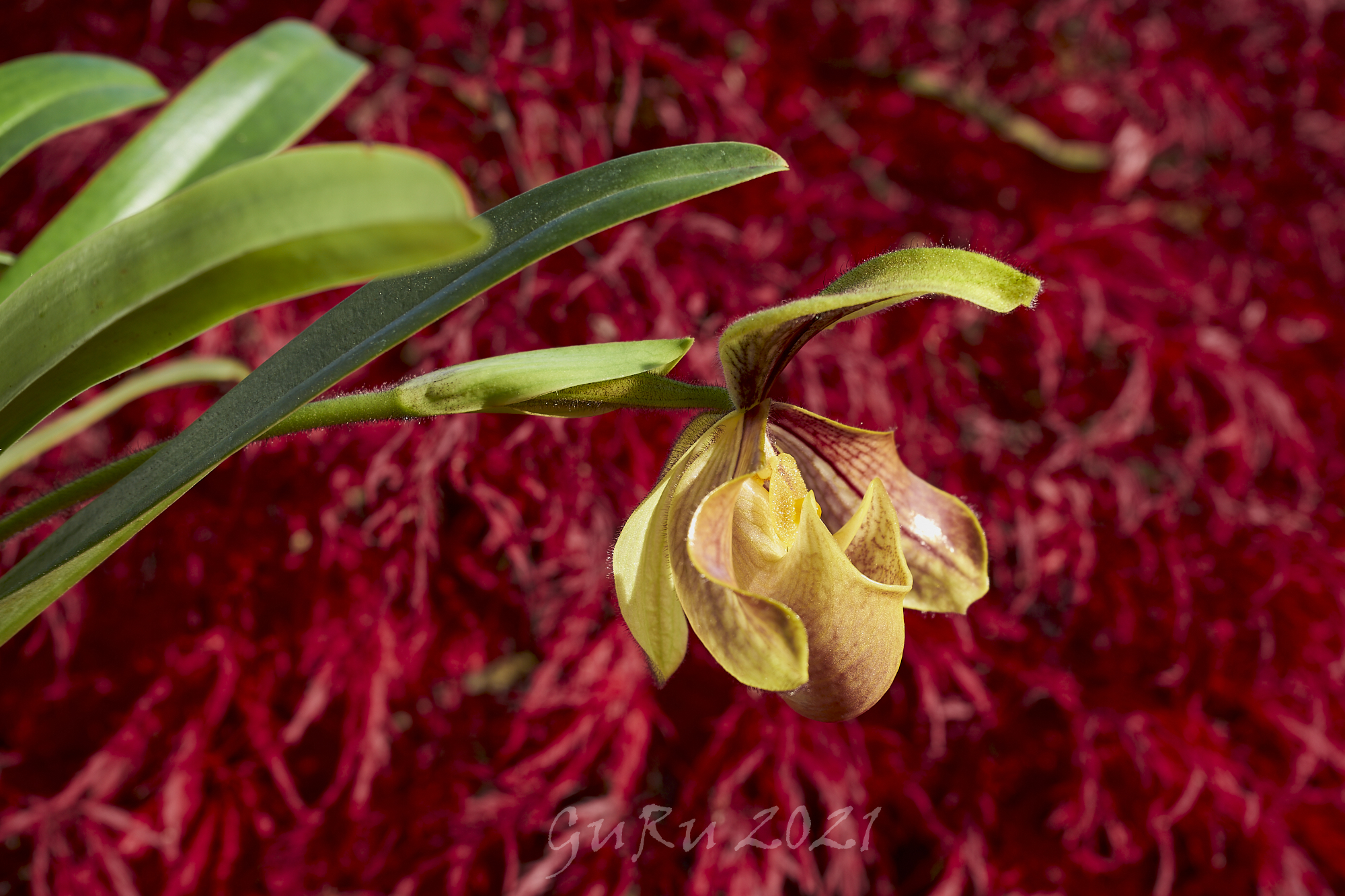Here are few photos of my Paph. villosum var. laichaunum which I like very much. In my eyes this variety is the nicest of all P. villosum varieties.
But enjoy it in person.



But enjoy it in person.



Last edited:




Well, I think I wrote here about that issue already before. About 20 years ago I was inspired by an orchid book to experiment with inorganic potting medium. The author of this book reported about growing orchids in classical potting mediums as well as in inorganic ones. As a lazy bone (which I am no really) I try to avoid work which isn't really necessary (e.g. repotting) and furthermore I'm convinced that plants also don't like this. So I started experimenting with inorganic potting mediums and nowadays I grow all my orchids in inorganic potting mediums except my Vandas 'Princess Micasa' which I grow without any medium in an empty cachepot...........What is the potting mix?
What is that medium?


How did you adjust your fertilising regime? To my ( not so broad ) knowledge, decaying bark provides some nutrients to the plant. With the inorganic mixture, this is missing if I understand that correctly. Recently I purchased some plants with clay balls and sphagnum and the look very strong and healthy with glossy leaves. So I am in a bit of an awe what to do. And you being in Europe, you must use some artificial heating during cold part of the year.Well, I think I wrote here about that issue already before. About 20 years ago I was inspired by an orchid book to experiment with inorganic potting medium. The author of this book reported about growing orchids in classical potting mediums as well as in inorganic ones. As a lazy bone (which I am no really) I try to avoid work which isn't really necessary (e.g. repotting) and furthermore I'm convinced that plants also don't like this. So I started experimenting with inorganic potting mediums and nowadays I grow all my orchids in inorganic potting mediums except my Vandas 'Princess Micasa' which I grow without any medium in an empty cachepot.
It was a long way to find an appropriate inorganic medium for my Paphs and I lost some of them by differen reasons, not always caused by the potting mix. I think by now they like my medium because they grow quite well.
I use a mixture of expanded clay balls with the grainig 4-8 and 8-16 mm, cracked clay balls, Seramis (which is burned clay) and cut styrofoam stripes. I mix them according to my experience. On the one hand too many coars parts prevent the water from rising within the pot and on the other hand too many fine grained parts make the medium too dense.
I attach two fotos of my mix. The first one with the medium in real size and the second one is a more close up.
View attachment 30294
View attachment 30295
How did you adjust your fertilising regime? To my ( not so broad ) knowledge, decaying bark provides some nutrients to the plant. With the inorganic mixture, this is missing if I understand that correctly. ........And you being in Europe, you must use some artificial heating during cold part of the year.
Well, I think I wrote here about that issue already before. About 20 years ago I was inspired by an orchid book to experiment with inorganic potting medium. The author of this book reported about growing orchids in classical potting mediums as well as in inorganic ones. As a lazy bone (which I am no really) I try to avoid work which isn't really necessary (e.g. repotting) and furthermore I'm convinced that plants also don't like this. So I started experimenting with inorganic potting mediums and nowadays I grow all my orchids in inorganic potting mediums except my Vandas 'Princess Micasa' which I grow without any medium in an empty cachepot.
It was a long way to find an appropriate inorganic medium for my Paphs and I lost some of them by differen reasons, not always caused by the potting mix. I think by now they like my medium because they grow quite well.
I use a mixture of expanded clay balls with the grainig 4-8 and 8-16 mm, cracked clay balls, Seramis (which is burned clay) and cut styrofoam stripes. I mix them according to my experience. On the one hand too many coars parts prevent the water from rising within the pot and on the other hand too many fine grained parts make the medium too dense.
I attach two fotos of my mix. The first one with the medium in real size and the second one is a more close up.
View attachment 30294
View attachment 30295
Uncontrolled providing of nutriens by decaying potting mediums was one of the reason why I was serching to an inorganic medium without this trait. You are right, I must put all nutriens in the system (pot) the potting medium contains almost no nutiens. But this should be no problem with nowadays fertilizers which contain quasi all nutriens which are necessary for a good plant growth. I water my Paphs with rain water and add a certain amount of fertilizer. In the past year round with a conductivity of 100 µS and this year I tried 200 µS. But due to the 200 µS I will water in November, December and January with pure rain water.
I'm an indoor grower so temperature isn't a problem within the central heated house (floor heating). The bigger problem ist to find cool places with enough light for those plants which like this during winter time. During summer they are all outside on a protected place but I had to bring them inside some weeks ago. The only Paph which is still outside though night temperatures drop down to 3 or 4° is....Paph. micranthum. I bring it inside the house not before when night temperature drops below zero.
How often do you water and do you drench the plants and pots or just a little as needed? Is the pot left to stand in a saucer of water? ThanksUncontrolled providing of nutriens by decaying potting mediums was one of the reason why I was serching to an inorganic medium without this trait. You are right, I must put all nutriens in the system (pot) the potting medium contains almost no nutiens. But this should be no problem with nowadays fertilizers which contain quasi all nutriens which are necessary for a good plant growth. I water my Paphs with rain water and add a certain amount of fertilizer. In the past year round with a conductivity of 100 µS and this year I tried 200 µS. But due to the 200 µS I will water in November, December and January with pure rain water.
I'm an indoor grower so temperature isn't a problem within the central heated house (floor heating). The bigger problem ist to find cool places with enough light for those plants which like this during winter time. During summer they are all outside on a protected place but I had to bring them inside some weeks ago. The only Paph which is still outside though night temperatures drop down to 3 or 4° is....Paph. micranthum. I bring it inside the house not before when night temperature drops below zero.
Boy, your system sounds so darn NOT labor intensive compared to mine. I’m amazed you can go that long between waterings with clay balls. I might play with this idea.I water my Paphs and Catts in my conditions every 2 or 3 weeks and yes I water enough for this time .... after watering there is estimated about 1 +/- cm of water at the bottom of the cache pot. I leave it there and the potting medium soaks it up by time. So there is enough moisture for the watering intervall (see above).
Deborah, I'm a lazy boneBoy, your system sounds so darn NOT labor intensive compared to mine. I’m amazed you can go that long between waterings with clay balls. I might play with this idea.
Enter your email address to join: